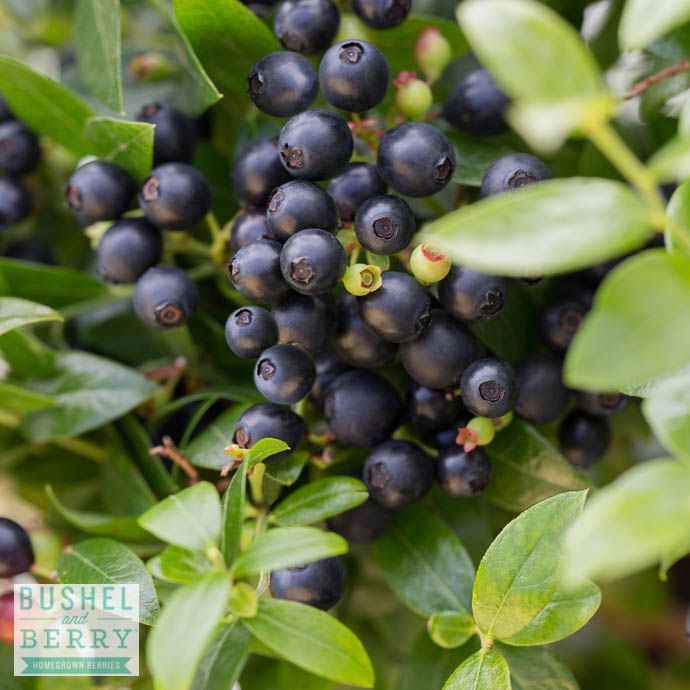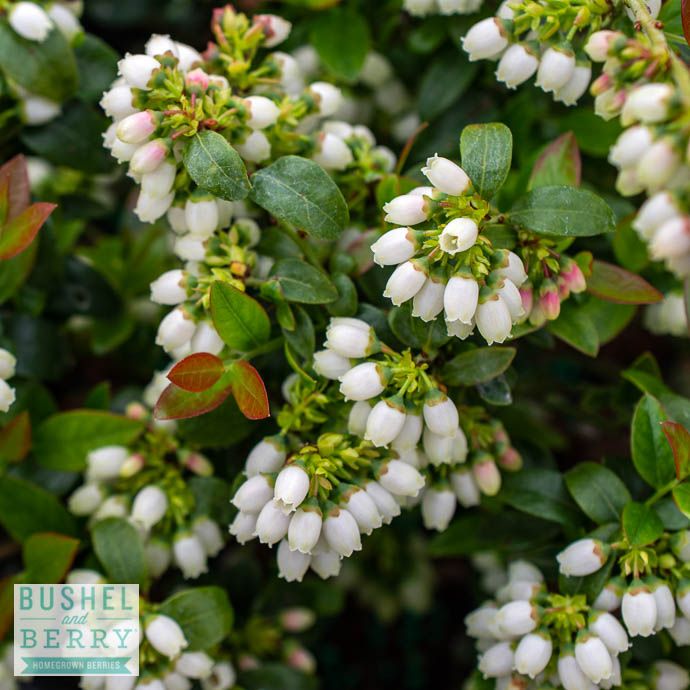Edible #2 Vaccinium x Bushel and Berry 'BerryBux'/ Dwarf Blueberry
Edible #2 Vaccinium x Bushel and Berry 'BerryBux'/ Dwarf Blueberry
SCIENTIFIC NAME: Vaccinium hybrid 'ZF08-095' PP 25467
COMMON NAME: Bushel and Berry Berrybux Blueberry, Highbush Hybrid Blueberry
GARDEN SIZE: 2-3 feet tall x 2-3 feet wide
GROWTH RATE: Reaches maturity in 6-8 years
USDA ZONE: 5-8
CHILL HOURS: 500-600
EXPOSURE: Full Sun
WATER & SOIL: Acidic, well-drained soil high in organic matter
HABIT (FORM): Multi-stemmed woody shrub with a compact, rounded, bushy form
FOLIAGE: Deciduous with shiny blue-green leaves that turn shades of purple, red, and yellow in autumn. Said to resemble the leaves of boxwoods.
FLOWERS: Clusters of small, bell-shaped, pink and white flowers
BLOOM TIME: Mid to late spring
HARVEST TIME: Mid summer
POLLENIZATION: Northern highbush blueberries (Vaccinium corymbosum) are self-fertile and produce some fruit in isolation, but they yield a bigger crop of larger berries with a compatible partner nearby. Plant near a highbush blueberry of a different variety that blooms around the same time to enable cross-pollenization.
POLLENIZATION PARTNERS: Recommended partners for Berrybux include other mid- to late-blooming highbush cultivars like Cabernet Splash or Bushel and Berry's 'Pink Icing' and 'Silver Dollar'.
FRUIT: Small, sweet, edible berries that are deep blue to black when ripe and have an aromatic flavor reminiscent of wild blueberries
CARE: When planting, condition the soil in an area twice the diameter of the root ball with peat moss or a soil conditioner like our Earthmix Landscape. Mix soil conditioner with existing soil in a 50/50 ratio.
Mulch with 2-6 inches of straw, wood chips, or other organic matter to help regulate moisture. Leave a gap of a few inches around the trunks to prevent damage to the stems from staying wet.
Blueberry bushes need about an inch of water every 7-10 days, though young bushes need a little more during their first growing season while they establish roots. If not enough rain has fallen, give a deep soak to the soil around the base of the plant once or twice per week. A good rule of thumb is 1 gallon of water per square foot of surface area under the canopy.
Fertilize each spring and fall with Holly-tone or another fertilizer made for acid-loving plants.
Prune in late winter to early spring while the plant is dormant. Remove weak canes and low-growing shoots that will be shaded by other limbs or touch the ground. If desired, cut taller canes down to within arm's reach to make it easier to harvest berries.
When your blueberry bush is about five years old, you may notice older canes becoming less productive. At this stage, begin cutting back 20% of the thick, gray, older branches to ground level each year. This will allow the canes to completely refresh themselves in a five year cycle.
PET SAFETY: May cause gastrointestinal issues in cats and dogs if consumed in large amounts, but not commonly eaten by pets. Always research further if you have concerns, as reactions can occur with anything. Also, remember to check the safety of any fertilizers or pesticides applied to your plants.
USES: Edible berries, hedges, borders, fall color
HISTORY: Berrybux's ancestry mixes northern highbush blueberry (V. corymbosum) with a generous helping of wild blueberries V. myrsinites and V. angustifolium. These wild ancestors give the bush its compact size and petite, blue-black berries. The Berrybux hybrid was originally produced in a 1988 cross-pollination, and it was selected in 2008 as a notable seedling for further study. It was assigned a U.S. patent in 2015, owned jointly by Fall Creek Farm and Nursery of Lowell, Oregon and the United States of America as represented by the Secretary of Agriculture. The leaves of Berrybux are said to resemble those of boxwoods, and that observation inspired the trade name "Berrybux", referencing the boxwood's scientific name, "Buxus".


